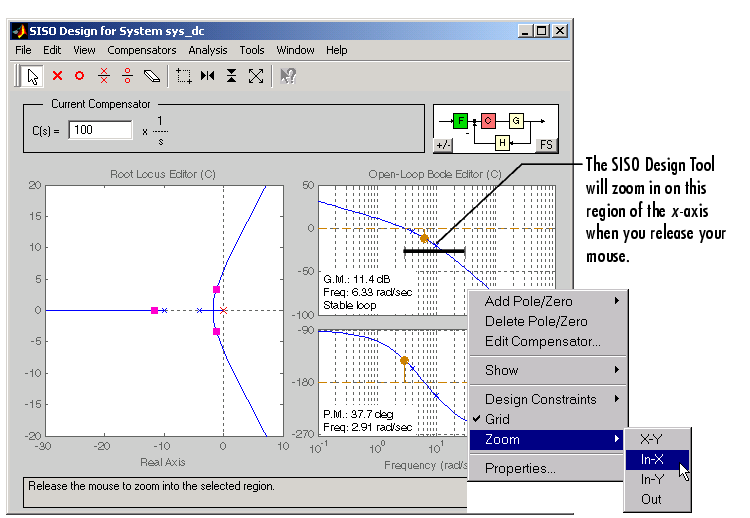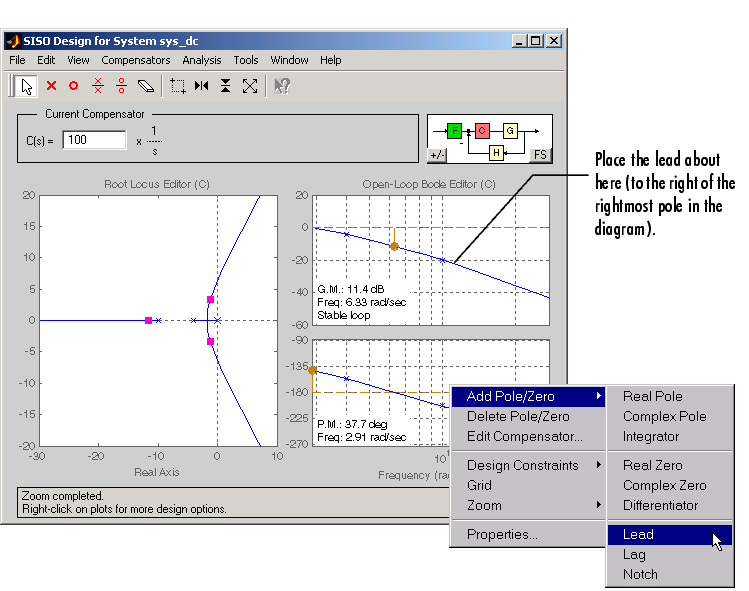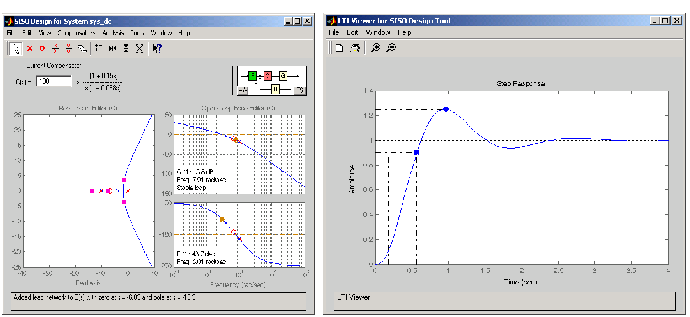

| Getting Started |   |
Adding a Lead Network
Part of the design requirements is a gain margin of 20 dB or greater and a phase margin of 40° or more. In the current compensator design, the gain margin is 11.5 dB and the phase margin is 38.1°, both of which fail to meet the design requirements. So two goals left are to shorten the rise time while improving the stability margins. One approach is to increase the gain to speed up the response, but the system is already underdamped, and increasing the gain will decrease the stability margin as well. You might try experimenting with the compensator gain to verify this. The only option left is to add dynamics to the compensator.
One possible solution is to add a lead network to the compensator. To make this easier to do on the diagram, zoom in on the x-axis. First, select Zoom In-X from the right-click menu; then select a region of the Bode magnitude plot by left-clicking and dragging your mouse. The range from 1 to about 50 rad/sec is good. This figure shows the process.

Figure 4-12: Zooming in on the X-Axis of the Bode Plots
To add the lead network, choose Add Pole/Zero and then Lead in the right-click menu for the Open-Loop Bode diagram. This figure shows the process of adding a lead network to your controller.

Figure 4-13: Adding a Lead Network to the DC Motor Compensator Using Right-Click Menus
Selecting a lead network causes your cursor to change to an `x.' Position this `x' on the Bode magnitude curve slightly to the right of the rightmost pole and click. Your SISO Design Tool and LTI Viewer plots should now look similar to these.

Figure 4-14: Root Locus, Bode, and Step Response Plots for the DC Motor with a Lead Network
The Step Response plot shows that the rise time is now about 0.4 second and peak response is 1.25 rad/sec (i.e., the overshoot is about 25%). Although the rise time meets the requirement, the overshoot is still too large, and the stability margins are still unacceptable, so you must tune the lead parameters.
 | Adding an Integrator | Moving Compensator Poles and Zeros |  |